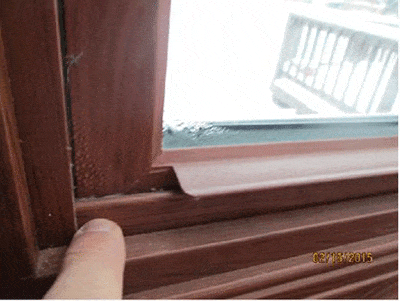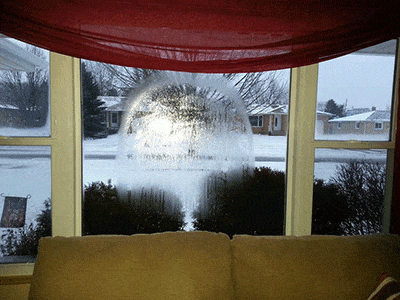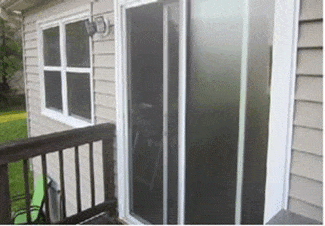If you have a house with windows there’s a good chance sooner or later you’ll want to get something fixed. Of course you can always pay to have your windows replaced, but the window warranty may be another solution.
Every window that I’ve ever seen has come with a warranty. Now, before you get your hopes up you should know that some warranties are more limited than others. You may be able to get your windows fixed easily through the warranty but you may not.

Windows used in new construction often come with shorter warranties than replacement winnows. New construction windows also often have warranties that are not transferable. If you didn’t build the house you might be out of luck.
There are several reasons that you might not be able to use the window warranty to get your windows fixed up, but it’s worth a try.
Step 1: Who installed your windows?
If you know who installed your windows you’re off to a good start. Your best bet is to contact them. Let them know what issue you’re having and they should be able to point you in the right direction.
Either they’ll be able to help you or they’ll be able to help you get started in finding a solution. As long as the window manufacturer hasn’t gone out of business and the warranty hasn’t expired you’re probably in good shape.
There might be a cost to fix your issue, it might be free, but they’ll be able to offer a solution.
Step 2: Who manufactured your windows?
If the company you bought the windows from has vanished (sadly this happens a lot) or if you don’t know who installed your new windows the next step is to look for the manufacturer of the windows.
Sometimes it’s easy to tell who made your windows, but sometimes it’s a little challenging. To their credit, large companies like Andersen or Jeld-Wen will often etch their logo into the corner of the glass. This makes identifying the manufacturer easy.
Unfortunately, some manufacturers will make it harder to find this info. They tend to leave any identifying information off of the window itself. That way future owners won’t know who made the window and won’t be able to use the warranty.
Before you give up and decide you don’t know who made the windows, you might want to do a little looking. If you have double hung windows that open up and down, try lowering the top sash and looking up into the frame. There’s a decent chance you’ll find a window warranty sticker. That sticker will have info that might help you get your problem solved.
For casement windows that crank outwards or sliding windows that slide side to side the sticker is usually in about the same place. Open the window and look up into the frame or down on top of the sash. If you can find a sticker with identifying info you’ll be in good shape.
Step 3: Contact the window manufacturer’s warranty department
Google is your friend at this point. Just lookup the manufacturer and you’ll likely find window warranty info on their website. You should be able to contact them and they’ll have a process for a warranty claim.
Pro tip: Before you file a warranty claim see if they can send you a copy of the warranty the would apply to your windows. Read it and understand the limitations. Use that info to frame your claim.
The process may seem long or overly challenging, but your life will be easier if you just follow their steps and give them the info they ask for. The person you’re dealing with is just following the rules so be polite and they’ll help you as much as they can.
Soon we’ll be updating posts with information on the warranty claim process for individual manufacturers. We’re going to start with the companies below and we can add any others. If you’re having trouble with one just let us knwo and we’ll see if we can help out.
Window warranty claim process:
- Alside Window Warranty
- Andersen Window Warranty
- Great Lakes Window Warranty
- Marvin Window Warranty
- Mi Window Warranty
- Okna Window Warranty
- Pella Window Warranty
- Revere Window Warranty
- Simonton Window Warranty
- Soft-Lite Window Warranty
- Sunrise Window Warranty
Step 4: What if your window warranty claim is denied?
If your warranty claim is denied you’ll want to look at the reasoning to decide how to respond. For example, if the warranty is denied because it was a 10 year warranty and the windows were installed 15 years ago you should just let it go. You have no warranty.
We see people posting comments on the site who are all upset about a warranty claim getting denied when they have no warranty anyway. Don’t be that guy. If the warranty wasn’t transferable and you’re the second owner then you don’t have a warranty. You can be as mad about that as you want but you’re wasting your energy. Just move on.
Warranty claims are often denied because the problem is installation related rather than product related. This happens all the time. We see people who are all upset about a warranty claim that was denied for a leaking window or a crooked window or a window that won’t close. Any of those could be manufacturing issues, but if they’re not then you’ll need to deal with the company that installed them.
If you don’t know who that company is or you don’t like them or they’re gone then there may be little you can do.
It’s important to keep this in mind when you’re filing your initial claim. You want to try to look to see what the issue is and make sure it appears to be a manufacturing issue. Once they’ve denied your claim it will be challenging or impossible to get them to change their minds.
Step 5: What if your claim is approved?
If your warranty claim is approved you’re in great shape. The manufacturer will be able to let you know how the parts will be shipped. You may be responsible for shipping costs. They can probably show you how to install them or direct you to an installer.
To find our company or other recommended companies in your area check this section. You can also find window reviews here and information about the tricky window sales tactics that many companies uses here. We hope you enjoy the site!





